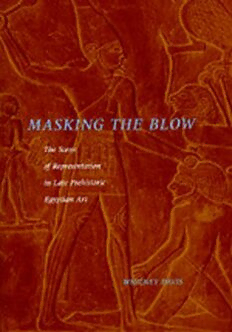
Masking the Blow: The Scene of Representation in Late Prehistoric Egyptian Art (California Studies in the History of Art) PDF
329 Pages·1992·4.293 MB·English
Most books are stored in the elastic cloud where traffic is expensive. For this reason, we have a limit on daily download.
Preview Masking the Blow: The Scene of Representation in Late Prehistoric Egyptian Art (California Studies in the History of Art)
Description:
The meaning of late prehistoric Egyptian images has until now been tantalizingly mysterious, as little understood as the circumstances of their production. As a result, analyses of these images have been general and often incorrectly illustrated. Whitney Davis now provides a welcome remedy in this detailed reinterpretation of the images carved on ivory knife handles and schist cosmetic palettes. These images are among the most important documents of early Egyptian history and include the Narmer Palette, often considered the very inception of ancient Egyptian image making. Davis deciphers the intriguing pictorial narratives and complex metaphors of images that are concerned with "masking the blow" of the ruler. "Masking the blow" refers to the ways that the imagesfrom hunted animals to human antagonistsrepresent, elide, or suppress the depiction of a ruler's violent act of conquering an enemy. Examining late prehistoric Egyptian images in light of contemporary visual theory and illustrating his analyses with excellent reproductions, Davis goes beyond the usual concern for stylistic development and iconographic meanings that characterize prior studies. His work will greatly interest art historians, archaeologists, anthropologists, and students of the visual arts.
See more
The list of books you might like
Most books are stored in the elastic cloud where traffic is expensive. For this reason, we have a limit on daily download.
